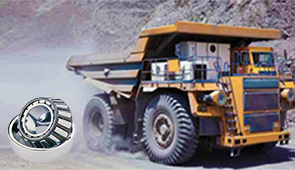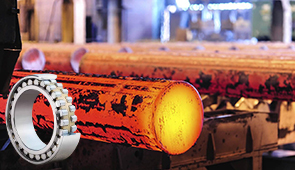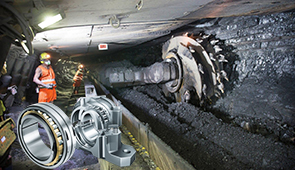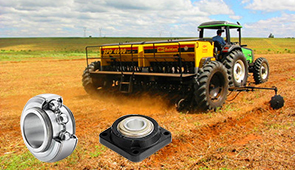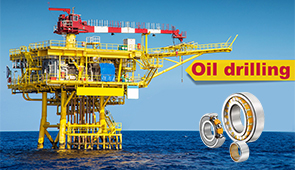Lubrication 101: Understanding Different Types of Lubricants and Their Functions
Lubrication is a critical aspect of machinery and equipment maintenance, ensuring optimal performance, longevity, and efficiency. Whether in industrial manufacturing, automotive systems, or everyday household tools, the proper application of lubricants reduces friction, minimizes wear, and prevents corrosion. This guide provides a comprehensive overview of the various types of lubricants—ranging from oils and greases to advanced synthetic formulas—and their specific roles in enhancing system performance. By understanding how different lubricants function and their appropriate uses, readers will gain the knowledge needed to make informed decisions for maintaining their machinery and equipment effectively.
What are the specific functions of lubricants?
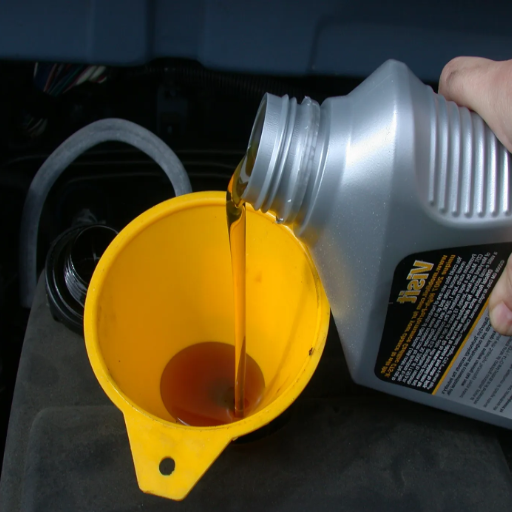
How do lubricants protect against corrosion and rust?
Primarily, lubricants avert rust and corrosion by violating the surface of the metal they intend to protect. This disrupts the barriers formed by moisture, oxygen, and other materials that may prove to be corrosive to the alloy. More specifically, lubricants consist of anti-corrosion components such as rust inhibitors that can neutralize acids or hinder water. For instance, some amine carboxylates can attach themselves to the surface of some metals hindering oxidation reactions from occurring.
- Capability of displacing water: Adequate lubricants have a low angle of contact with metal parts so that water is properly repelled and efficiently displaced.
- Film strength: All lubricants must ensure that they provide some form of protection and uniformity under the normal film operating conditions.
- Neutralization number: This number indicates the capability of the lubricant to neutralize contaminants which are acidic.
Through achieving these targets, lubricants guarantee that the total corrosive damages over time will be minimal, consequently, increasing the equipment’s life span while maintaining an acceptable operational efficiency level.
What role do lubricants play in heat dissipation?
Lubricants have a very important function as they remove excess heat from the parts of a machine. Lubricants also serve to retain and manage the heat produced while different components are in motion.
- Thermal conductivity: A lubricant with good thermal conductivity can move heat away from a contact surface to a cooling system or surrounding area.
- Specific heat capacity: A lubricant with increased specific heat capacity will be able to absorb more thermal energy before it’s temperature drastically increases.
- Viscosity: The flow rate and film formation of the lubricant are impacted by viscosity which in turn affects how quickly the lubricant can circulate and carry heat away.
- Volatility: Low volatility guarantees that the lubricant will remain stable at high temperatures while losing little to no material due to evaporation, keeping its heat transfer abilities intact.
By controlling these factors, lubricants contribute to the ensuring the thermal stability of machines, reduce the chances of overheating, and improve the durability of mechanical systems by dealing with dangerous temperatures.
What are common applications for different types of lubricants?
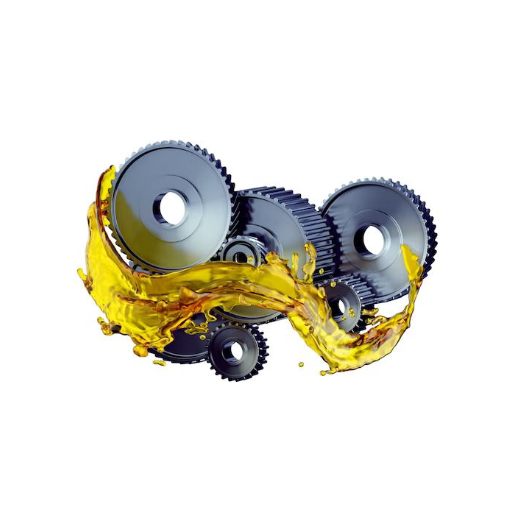
What are the best lubricants for bearings?
Different bearings have different operational conditions such as, temperature, load, speed and environment, so the best lubricant will differ experts recommend. In most cases, grease proves to be the best option because it offers prolonged lubrication and does not wear off easily. Lithium or lithium-complex thickeners greases are widely used since they are thermally and water resistant.
Whenever the application needs to operate at high speeds, using low viscosity synthetic oils does the task without adding additional friction. Typically, the synthetic oils’ viscosity varies with bearing sizes and speed, and range from ISO VG 22 to 68. PAO synthetic oils are best recommended for more extreme conditions.
Solid lubricants like molybdenum disulfide and graphite can easily withstand high temperatures, meaning they’re perfect for use within industrial machines. Furthermore, those solid lubricants, alongside high temperature greases which are made with complex thickeners, can endure heat of over 200 degrees Celsius. In addition to that, those solid lubricants are ideal for temperatures over 392 degrees Fahrenheit too. Many lubricants contain anti oxidation additives to lower the chance of thermal decay too.
Plain bearings can be subjected to high amounts of weight, but at the same time, require grease which contains EP additives. Those greases tend to meet the ASTM D2596 weld load parameters. This ensures reliability against mechanical stress.
To guarantee system reliability and lifespan, one must choose lubricants made specifically for the type of bearings. Additionally, recommendations made by the equipment manufacturer should also be taken into consideration.
When are penetrating lubricants necessary?
Used on components that are seized, corroded, or tough to disassemble due to oxidation, rust, or stubborn debris, penetrating lubricants are a critical step. Penetrating oils are made with low cross-link density and high capillary action which enables them to penetrate tight surfaces seamlessly.
- Viscosity: The fluid has to infiltrate small clearances and tight seams which is ensured by the low viscosity value (measured in centistokes, cSt).
- Corrosion Protection: Some standards such as ASTM B117 will be a prerequisite for the lubricant to use. By doing so, the rust formation received after application is restricted.
- Flash Point: Safety during applications is ensured by the above high flash point along with the use of warm conditions or heat radiation.
- Utilization: Defined as the ability to lessen static friction between seized components or motion enabling surfaces; this can be achieved through testing methods defined by the manufacturer.
Utilizing a penetrating lubricant that adheres to these factors ensures optimal performance when freeing corroded parts while minimizing risk of damage.
How to choose the right lubricant for your needs?

What factors should you consider when selecting a lubricant?
When picking a lubricant, many elements must be considered to make sure it is appropriate and effective for the specific application:
- Thermal Operating: The lubricant should retain its properties within the temperatures expected to be encountered. For instance, a high-temperature application may require synthetic lubricants or those with a high viscosity index greater than 204 deg C (400 deg F).
- Load and Pressure: The results for operating under various loads will depend on the film strength of the lubricant as well as the Exteme Pressure (EP) supplements. For heavy loads, the lubricant should be conditionful with these additives as sulfur-phosphorus compounds, like sulfur-phosphorus EP-rated lubricants.
- Viscidity: A lubricant’s viscosity determines how easily a particular liquid flows. This measurement is typically stated in centistokes, or cSt. Such measurements should also be recommended by leaders of such equipment through ISO as VG32, VG46, or VG68 cylinders for maximum strength of service.
- Materials Compatibility: Make certain that viscosity modifiers will not have solvating effects on the other seals or any components of the system, especially if rubbers, plastics, and certain metals are used. Use compatibility charts from manufacturers as a quick guide.
- Anti-Rust and Oxidative Measures: Where there is contamination from moisture or air, lubricants with such substances must be chosen carefully. The ASTM D665 test is considered the conventional method for evaluating rust inhibitors which are dry, anti-corossiove and serves as stabilizing oxidation aids.
- Application Type: “Pick lubricants that are best suited for the specific purpose,” which means you can have a grease for bearings, gear oils for the drivetrains, or penetrating oils for stalled parts.
- Environmental Considerations: In extremely sensitive areas, the use of lubricants has to be biodegradable. See adherence to the regulations like ISO 14001 standards for more sustainable options.
It is possible to choose a lubricant that guarantees reliability and optimal functionality by checking industry standard factors.
Can different types of lubricants be mixed?
The mixing of different lubricants is not recommended because of the chemical incompatibility potential and overall degradation of performance. The performance attributes of lubricants are based on the base oils, additive packages, or viscosity grade. Their combination can lead to thermal stability loss, film strength impairment, and escalation in wear. Example includes:
- Base Oil Compatibility: Lubricants that are prepared with a mineral oil, synthetic oil, or biodegradable source may not mix well. This leads to phase separation or change in lubrication performance. Always check the mismatching base oils concerning their technical compatibility data.
- Additive Packages: Anti-wear agents, detergents, and extreme pressure additives can coat each other defensively. Thus when mixed they can cause reactive actions that lead to protective layer depletion and sludge development.
- Viscosity Index Effects: Primary and secondary lubricants differ in their viscosity grades, therefore mixing them leads to severe imprecision in the component film thickness. Should the lubricant cast-off cover components that operate in severe conditions, the combination will cause a rise in friction.
For critical systems, refer to the manufacturer’s technical data sheets or mark out compatibility under controlled exposure. If a lack of certainty exists on lubricant compatibility, the most dependable method is to flush the system and replace it with one lubricating oil. It will guarantee optimal performance.
What are some common mistakes in lubrication?
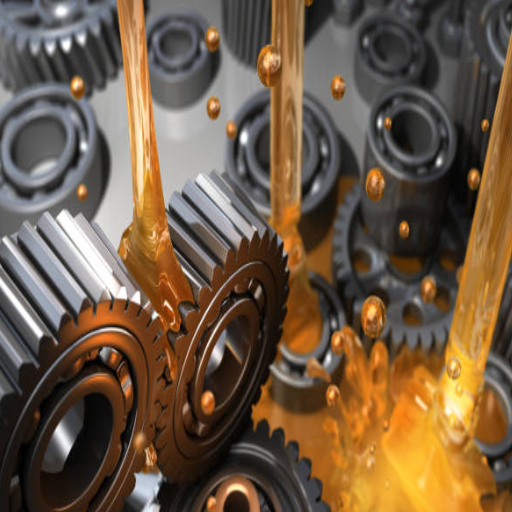
Why is over-lubrication a problem?
The introduction of too much grease or oil into a system is what is defined as over-lubrication. This can lead to various technical problems that are very concerning. An over-arching issue that could arise includes an elevation in operational temperatures. This is because over lubrication is known to generate frictional drag in excess which can lead to a lot of jolting friction within bearings or other components. Depending on the scenario, the increased heat can result in thermal degradation which can lead to the failing of lubricants as well.
Over lubrication can be extremely hazardous, especially due to the contamination dangers. Additional grease is known to be quite detrimental to critical units as it can easily draw in dirt or various other hazardous substances. This can result in wear of important components. And it does not end there, additional grease can result in the lubricated units are sealed off can result in the breaking up of protective measures which can lead to malfunction and further contamination.
In terms of lubrication, over application causes an imbalance in the lubrication film thickness that is stated in the manufacturer’s datasheet. One instance of this is in dynamic systems that work with a very high rotation speed – for example over 10,000 to 20,000 RPM – or extremely high loads, such as contact pressures above 3000 PSI. Such systems and components are very sensitive to these changes. These modificatons result in their intended characteristics being completely altered. These changes can cause efficiency drops, escalated wear rates and ultimately disaster in the form of equipment breakdown.
To mitigate these problems follow dosage guidelines which are critical for maximizing system efficiency. Always measure the specific lubricant quantity with calibrated devices and set the appropriate application levels by ISO3448 technical standards for viscosity grades.
What happens when you use the wrong type of lubricant?
Selecting the wrong lubricant type can have detrimental long-term impacts on the functionality and life expectancy of any mechanical system.As an example, if a lubricant is employed with viscosity lower than the recommended ISO3448 grade, it will not be able to adequately lubricate leading to excessive metal-to-metal contact, wear, and overheating. On the other extreme, too viscous lubricant will hinder motion, leading to increased energy usage, and poor circulation in the smaller parts.
Likewise, an inappropriate formulation, for instance, without anti-wear (AW) and extreme pressure (EP) additives would have negative results at a low grade of 3000 PSI and high temperatures exceeding 250 °F (121 °C). Incompatible lubricants as per the material specification like seals or contact surfaces may further swell, crack, or erode components through undesirable chemical reactions.
In the end, having the wrong lubricant for a system will dramatically lessen the operational performance effectiveness and increase maintenance costs and risks of failure. To eliminate the issues, equipment manufacturer recommendations must be followed, ISO3448 should be respected, and condition monitoring is done regularly.
How to properly store and handle lubricants?
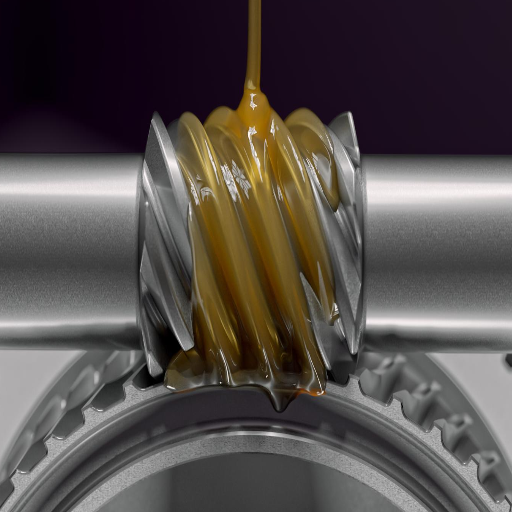
What are the best practices for lubricant storage?
To safeguard the quality of the lubricants that I manage, I always observe a set of practices that approach contamination mitigation. To begin with, I store lubricants in a clean, dry and temperature controlled environment. Ideally, the temperature setting should be around 32 °F to 86 °F (0 °C to 30 °C). Containers are stored upright to avoid spillage and the formation of moisture bubbles while drum bungs are stored under the three o’clock and nine o’clock position to mitigate any water ingress.
I never allow lubricants to be exposed to direct sunlight since this may cause oxidation. Additionally, all preservatives are kept off the ground on pallets which minimizes the risk of condensation forming on the products. Each container is labeled with specific details regarding the product’s contents, batch number, and expiration date to avoid cross-contamination. Also, spill trays are employed just in case there is any incidental leakage of the lubricant.
While handling lubricants, I always ensure that the tools and equipment I intend to use are clean and dedicated specifically for the task to eliminate any foreign substances jeopardizing quality. Only using clean tools is one example of how I aim to keep contamination of the lubricant as low as possible. As long as I follow these guidelines and conduct routine checks on the inventory, the quality and performance of the lubricants is maintained.
How often should lubricants be replaced?
The timeline for changing lubricants is determined by a mix of factors such as lubricant type, operating conditions, and the suggestions of the manufacturing company. In a broad aspect, lubricants should be changed by these straightforward rules:
- Industrial Machinery Lubricants: Change after 4,000-8,000 service hours, or as stated in the OEM manual.
- Automotive Engine Oils: Manufacturer suggestion mandates an oil change after 3,000-10,000 miles depending on the specified oil type, its blend, and the requirements specified by the engine.
- Hydraulic Fluids: The recommended change period typically varies from 2,000 to 4,000 hours, however, specific routine measurements of the viscosity, acid number, and contamination levels will have to dictate those specific decisions.
- Greases: Establish intervals for inspecting lubrication points and replenish or replace grease according to the operational conditions, bearing temperatures, and degree of contamination.
To make certain that replacement intervals are maximized, performing routine periodic oil analysis is vital. The primary characteristics that need to be monitored are the viscosity which should vary from the original value within ±10%, Total Acid Number (TAN), Total Base Number (TBN), Concentration of wear metals, and the amount of contaminations such as water and dust. These replacement intervals, substantiated by these tests, will serve their purpose in protecting the asset without having to face unneeded waste.
Frequently Asked Questions (FAQs)
Q: What are the main types of lubricants?
A: The main types of lubricants are oil, grease, and dry lubricants. Oil is a thin liquid that comes in a variety of formulations, including motor oil. Grease is a thicker lubricant that stays in place better. Dry lubricants, such as PTFE, are used where traditional oil or grease cannot be used.
Q: What is the primary function of a lubricant?
A: The primary function of a lubricant is to reduce friction between two surfaces that are in contact and moving relative to each other. This helps to prevent wear, reduce heat generation, and improve the efficiency of mechanical systems.
Q: How does motor oil lubricate an engine?
A: Motor oil lubricates an engine by forming a thin film of lubricant between moving parts. This oil film separates metal surfaces, reducing friction and wear. It also helps to cool engine components, clean the engine by carrying away contaminants, and protect against corrosion.
Q: What are additives in lubricating oil?
A: Additives are chemicals added to lubricating oil to enhance its performance. Common additives include anti-wear agents, detergents, dispersants, and extreme pressure additives. These help to improve the oil’s ability to protect against wear, clean engine components, and withstand high pressures and temperatures.
Q: When should I use a dry lubricant?
A: Dry lubricants should be used in situations where traditional oil or grease cannot be used. This includes environments with extreme temperatures, high vacuum, or where cleanliness is critical. Dry lubricants, often in spray form, are also useful for lubricating mechanisms where oil will “gum up” or attract dirt.
Q: How often should I lubricate machines or equipment?
A: The frequency of lubrication depends on the specific machine, its usage, and the environment it operates in. It’s important to understand the manufacturer’s recommendations for each piece of equipment. Some machines may need daily lubrication, while others might only need it monthly or annually. Regular inspection can help determine when additional lubricants are needed.
Q: Can adding oil to a dirty mechanism cause damage?
A: Yes, adding oil to a dirty mechanism can potentially cause damage. The oil can mix with dirt and debris, creating an abrasive paste that accelerates wear. It’s always best to clean the mechanism before applying new lubricant. This ensures that the new lube can properly protect the surfaces and perform its function effectively.
Q: What’s the difference between oil and grease?
A: While both oil and grease are used for lubrication, they have different consistencies and applications. Oil is a thin liquid that flows easily and is good for high-speed applications or where heat dissipation is important. Grease is a semi-solid lubricant made by adding a thickening agent to oil. It’s better for slower-moving parts or where a lubricant needs to stay in place and resist water washout.
Q: Are there any surfaces or materials that don’t need lubrication?
A: Yes, some surfaces and materials don’t need lubrication or can be damaged by it. For example, many plastic-on-plastic or plastic-on-metal interfaces are designed to operate without additional lubrication. Some types of bearings, like certain ceramic bearings, are also designed to run dry. Always consult the manufacturer’s guidelines to determine if lubrication is necessary or beneficial.
UCTH213-40J-300 with Setscrew(inch)
CNSORDERNO: Normal-duty(2)
TOGN: UCTH213-40J-300
SDI: B-R1/8
SD: 2 1/2
UCTH212-39J-300 with Setscrew(inch)
CNSORDERNO: Normal-duty(2)
TOGN: UCTH212-39J-300
SDI: B-R1/8
SD: 2 7/16
UCTH212-38J-300 with Setscrew(inch)
CNSORDERNO: Normal-duty(2)
TOGN: UCTH212-38J-300
SDI: B-R1/8
SD: 2 3/8
UCTH212-36J-300 with Setscrew(inch)
CNSORDERNO: Normal-duty(2)
TOGN: UCTH212-36J-300
SDI: B-R1/8
SD: 2 1/4
UCTH211-35J-300 with Setscrew(inch)
CNSORDERNO: Normal-duty(2)
TOGN: UCTH211-35J-300
SDI: B-R1/8
SD: 2 3/16
UCTH211-34J-300 with Setscrew(inch)
CNSORDERNO: Normal-duty(2)
TOGN: UCTH211-34J-300
SDI: B-R1/8
SD: 2 1/8









